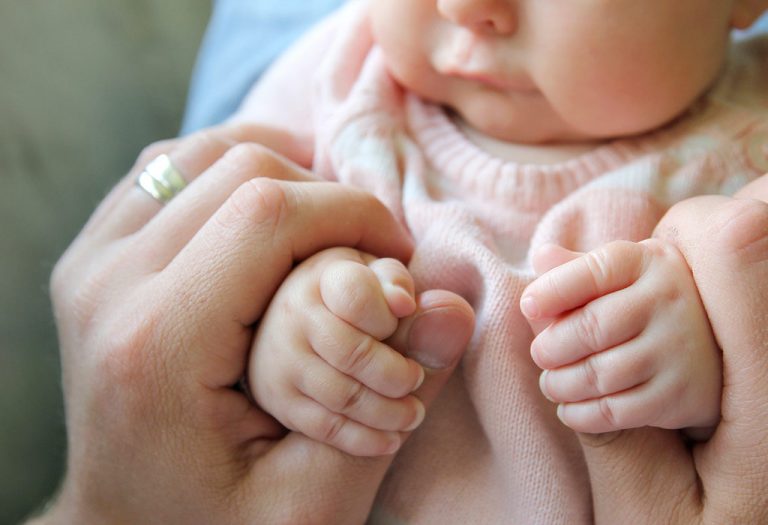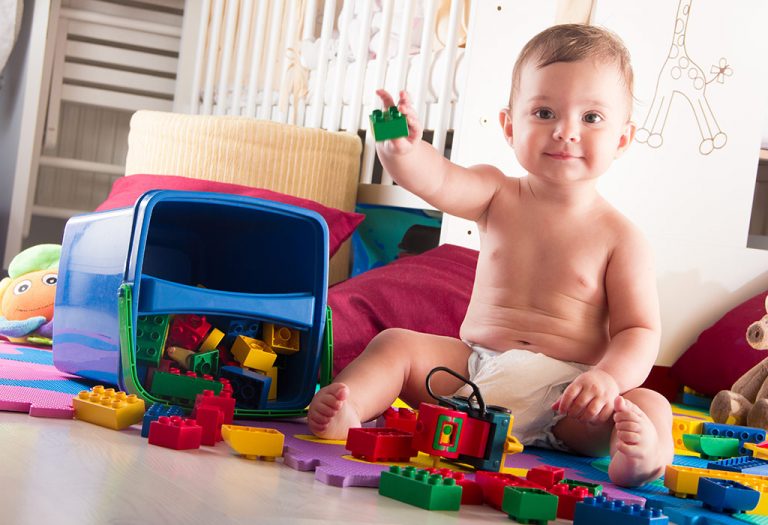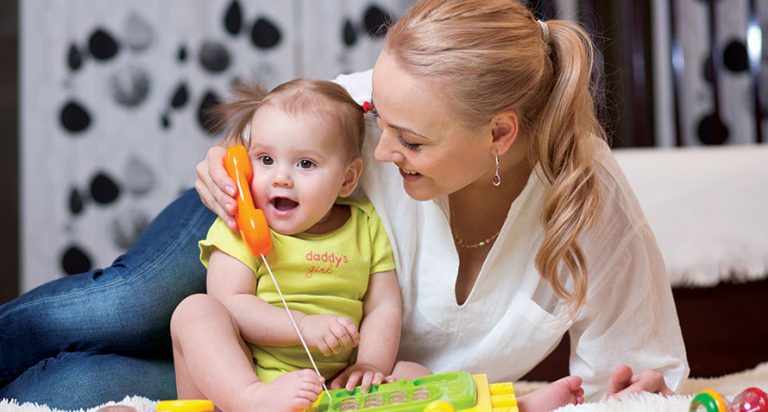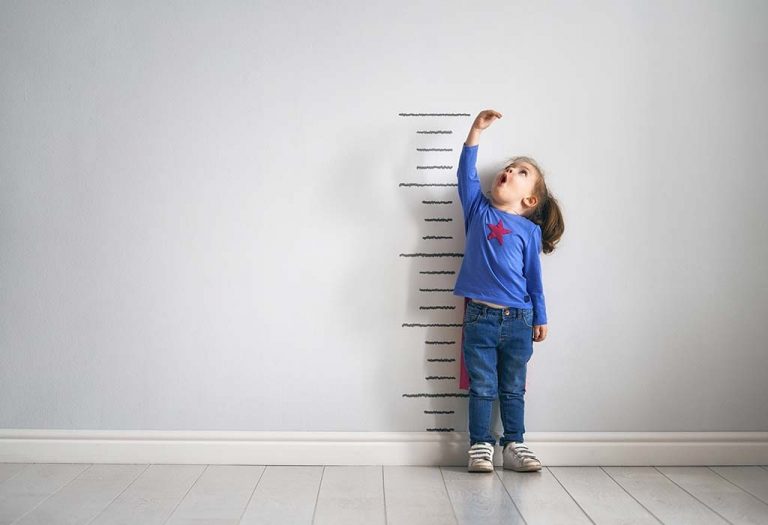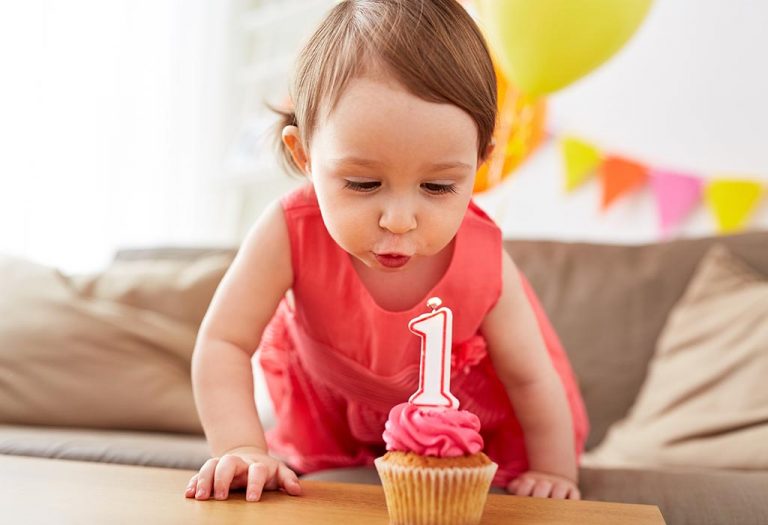3 Months Old Milestones – Physical, Cognitive, & Feeding Development
Your baby is growing fast, and although your newborn keeps you on your toes, you’ll love every minute of the coming months. From their first smile to those wobbly first steps, every moment is a precious milestone in your baby’s journey. During the first year, your child will develop at a rapid pace, physically, emotionally, and cognitively. It’s a time filled with discovery, both for your baby and for you as a parent. Keeping track of your 3-month-old milestones will make sure things are going on the right track and is also an effective way of spotting and preventing developmental delays. In this article, we’ll walk you through the key physical, cognitive, social, and feeding developments to look out for at this stage.
Three Month Old Milestone Chart
Here is the 3-month-old baby milestones chart to give you a glimpse of what’s happened so far and what to look forward to.
| Achieved Milestones | Emerging Milestones |
| Moves head 45° | Moves head 90° |
| Is quiet near strangers | Gets fidgety around strangers |
| Tracks objects within his field of vision | Turns head to track objects outside his field of vision |
| Pushes legs downwards when held up | Supports weight on legs when held up |
| Imitates some actions | Imitates more actions |
| Grabs objects nearby | Tries to grab objects far away |
| Shakes objects nearby | Throws objects to corners and hits places |
Developmental Milestones of a 3-Month-Old Baby
The major developmental milestones are categorised into six types – cognitive, physical, social and emotional, visual and hearing, feeding, and communication development. Below is a helpful 3-month-old milestones checklist to look for.
1. Cognitive Development Milestones
At 3 months, your baby’s brain is growing rapidly, and they’re starting to make sense of the world around them. Here are a few cognitive milestones you might spot this month (1).
- Imitates Actions – Whether you’re cooking, cleaning or doing something interesting, your baby will mimic you like a mime and imitate some of your actions.
- Chortles – Your baby chuckles, chortles and babbles in response to anything you say to him. It’s his way of replying to you.
- Turns Head – Whether you make a noise or some else does, your little one will turn his head around to find out the source.
- Reads Faces From a Distance – No longer will you and your friends have to come close to your baby and help him look at every one. Your baby will be able to notice people and their faces from far away or longer distances now.
2. Physical Development Milestones
This is the stage where babies begin to gain better control over their bodies. Here are some key physical milestones to look out for at 3 months (2).
- Turning Their Head– Your baby will be able to turn his head when you move objects away from his field of vision in order to track it.
- Tilts Head 45° – During tummy times, you’ll notice your little one being able to lift or tilt his head up 45° and see or notice toys around him. His neck muscles will strengthen in the process.
- Bears Body Weight With Support – When you hold your baby up, you’ll see your little one being able to stand by bearing his weight on his feet. Although he can’t stand all alone, he will be able to stand briefly with your help.
- Less Sleep – By the time your little one turns three years old, he will be sleeping less as time goes by. You’ll notice him sleeping for 15 hours instead of the usual 16 hours during this phase and during night time especially.
3. Social & Emotional Milestones
Your baby is beginning to connect more deeply with you and others. Below are some common social and emotional milestones for a 3-month-old (3).
- Interacting With Siblings – Your baby will be aware of his siblings’ existence and interact with them through coos and other sounds.
- Reserved Around Strangers – Your little one won’t be friendly with strangers and remain quiet. Some babies get anxious when shown to strangers as well.
- First Laugh – Between the ages of three months to four months is when you will hear your baby laugh for the very first time.
- Smiles at You – Where primary caregivers and parents are concerned, your little one will smile as a way to greet people. Your baby will only smile at people he recognises and not at strangers.
4. Visual & Hearing Milestones
Your baby’s senses are sharpening quickly. Here are some typical visual and hearing milestones your 3-month-old may reach (4).
- Sharp Contrasts – Your baby will enjoy seeing brightly coloured toys and sharp contrasts. He will get used to seeping stripes and colours with sharp contrasts like black and white.
- Observing Faces – Your baby will start getting accustomed to new faces and may stare back into people’s eyes for some time. If you give him a crib mirror, he will intently watch his own facial expressions.
- Responds to Your Voice – Your little one will be able to recognise your voice and begin responding to sounds around him through cooing or vowel noises.
- Tracks Objects With Eyes – Your little one will turn his head to track objects that go outside his field of vision. He will be able to follow your movements and watch where you’re going as well from far away.
5. Communication Development Milestone
Even though they aren’t speaking yet, your baby is already learning how to communicate. These are a few early communication milestones to watch for this month (5).
- Social Smiles – If your baby knows a stranger or meets a new friend often, he will show his “social smile” and express joy upon meeting them. This only happens once he’s familiarised himself seeing new faces, however.
- Making Gestures – Crying isn’t the only way your baby communicates at this age. He will mimic you and make gestures for interactions and responses.
- Less Crying – Coming back to crying, your baby won’t be crying any more than 1 hour a day tops.
- More Sounds – Your baby will use babbles and sounds like ‘ooh,’ ‘ah’ and vowel notations and cooing voices to communicate with you. He will watch your facial expressions, gestures and respond accordingly with different sounds and tones.
6. Feeding Milestones
At 3 months old, most babies are still primarily fed breast milk or formula, as their digestive systems are not yet ready for solid foods. During this stage, feeding becomes more efficient and predictable. Breastfed babies typically nurse every 3 to 4 hours, around 6 to 8 times a day, while formula-fed babies usually take 6 to 7 ounces (177-207 ml) per feeding about every 4 hours (6).
When to Consult a Doctor
Consult a doctor if your baby-
- Doesn’t Respond – If your baby remains expressionless at the sight of your face and others greeting him, it’s a sign of serious developmental delay.
- Doesn’t Babble – If your baby doesn’t make sounds or babbles, then that’s a caution sign right there.
- Bobs His Head – If your baby flops his head and is not able to support it on his own, then that’s something to be concerned about.
- Can’t Grab or Hold Objects – If your baby shows a lack of interest towards playing with toys, is unable to grab nearby objects or doesn’t put toys in his mouth, then that’s a telltale sign.
Tips to Help Your Three Month-Old Achieve His Milestones
Here are ways to help your little one achieve its milestones sooner (1):
- Tummy Time Games – Play games with your baby that places him in a tummy time position and encourages neck-muscle movement. More tummy time means a faster transition to crawling as well.
- Talk to Your Baby – Babble on or say words to your baby even if he doesn’t understand at first. Talk about how your day went or what the menu for dinner is. His hearing and vocabulary skills will improve this way.
- Connect Words With Gestures – Your little one will make associations faster if you display actions and follow up with words. Routine speaking and doing will teach him to process verbal information on a subconscious level.
- Play With Toys – Toy train track sets are one of the best ways to train your little one in the art of tracking moving objects. Tie a string to a toy car, move it around and motivate him to crawl and catch it.
FAQs
1. Should my baby be sleeping through the night by now?
Some babies may begin sleeping for longer stretches at night (5-6 hours), but it’s still normal for 3-month-old to wake for feeding. Establishing a bedtime routine can help improve sleep patterns over time.
2. Is it normal for a 3-month-old to drool a lot?
Yes, increased drooling is very common around this age. It’s often due to your baby exploring with their mouth and can sometimes be an early sign of teething, even if no teeth appear for a while.
There’s no magic formula for achieving the necessary 3-month-old infant milestones. Just keep practising, be gentle with your little one and he’ll get there sooner than you’d expect.
References/Resources:
1. Children’s Hospital of Orange County – 1-3 Months Old Baby Development
2. National Childbirth Trust – 3-6 months – Life with your baby
3. American Academy of Pediatrics – Developmental Milestones: 3 Months
4. Nemours KidsHealth – Your Baby’s Hearing, Vision, and Other Senses: 3 Months
5. National Institutes of Health – Speech and Language Developmental Milestones
6. Nemours KidsHealth – Your Baby’s Growth: 3 Months
Previous Month: 2 Months Old Baby Milestones
Next Month: 4 Months Old Baby Milestones
Was This Article Helpful?
Parenting is a huge responsibility, for you as a caregiver, but also for us as a parenting content platform. We understand that and take our responsibility of creating credible content seriously. FirstCry Parenting articles are written and published only after extensive research using factually sound references to deliver quality content that is accurate, validated by experts, and completely reliable. To understand how we go about creating content that is credible, read our editorial policy here.





